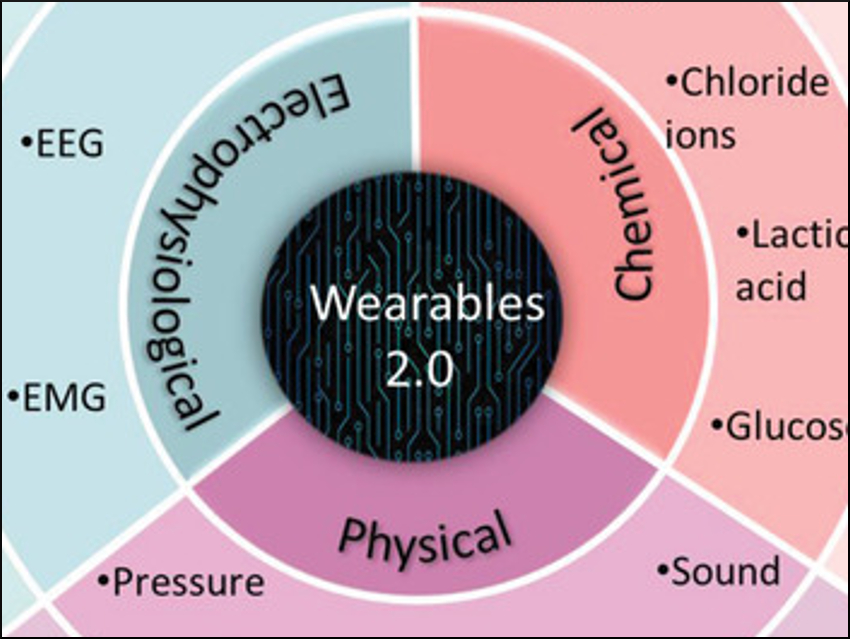The wearable technology used today is still mostly bulky and rigid. This leads to an uncomfortable user experience and poor data accuracy. However, a new generation of wearable technology, with devices adapting to the human body like a second skin, is in early development. Unlike current products, whose development starts from existing devices, future soft wearable technologies may start from scratch, with new materials.
Wenlong Cheng, Monash University, Clayton, Australia, and colleagues have summarized the progress in the development of future wearable technologies. Soft sensors can attach to the human skin like a band-aid or even be integrated as a tattoo. The team focused on the challenge of finding innovative materials for soft sensors with flexible, stretchable, and biocompatible properties. Those could be composites of nanomaterials, liquid metals, carbon materials, hydrogels, or polymers. The team also discussed soft, stretchable power sources for future wearables, e.g. flexible lithium-ion batteries, fuel cells, or nanogenerators. The researchers point out that is is important to develop ways to pair the soft sensors with the rigid electric components that are needed for data processing and wireless communication.
While wearable sensors could have many applications, personalized health care and diagnostics could benefit particularly from measuring physiological, physical, and chemical biometric signals in real time, e.g. for monitoring heart conditions, muscle strain, or blood sugar. According to the researchers, interdisciplinary research will be necessary to unify all necessary components in a soft and biocompatible wearable sensing system—a “wearable 2.0”.
- Disruptive, Soft, Wearable Sensors,
Yunzhi Ling, Tiance An, Lim Wei Yap, Bowen Zhu, Shu Gong, Wenlong Cheng,
Adv. Mater. 2019.
https://doi.org/10.1002/adma.201904664


